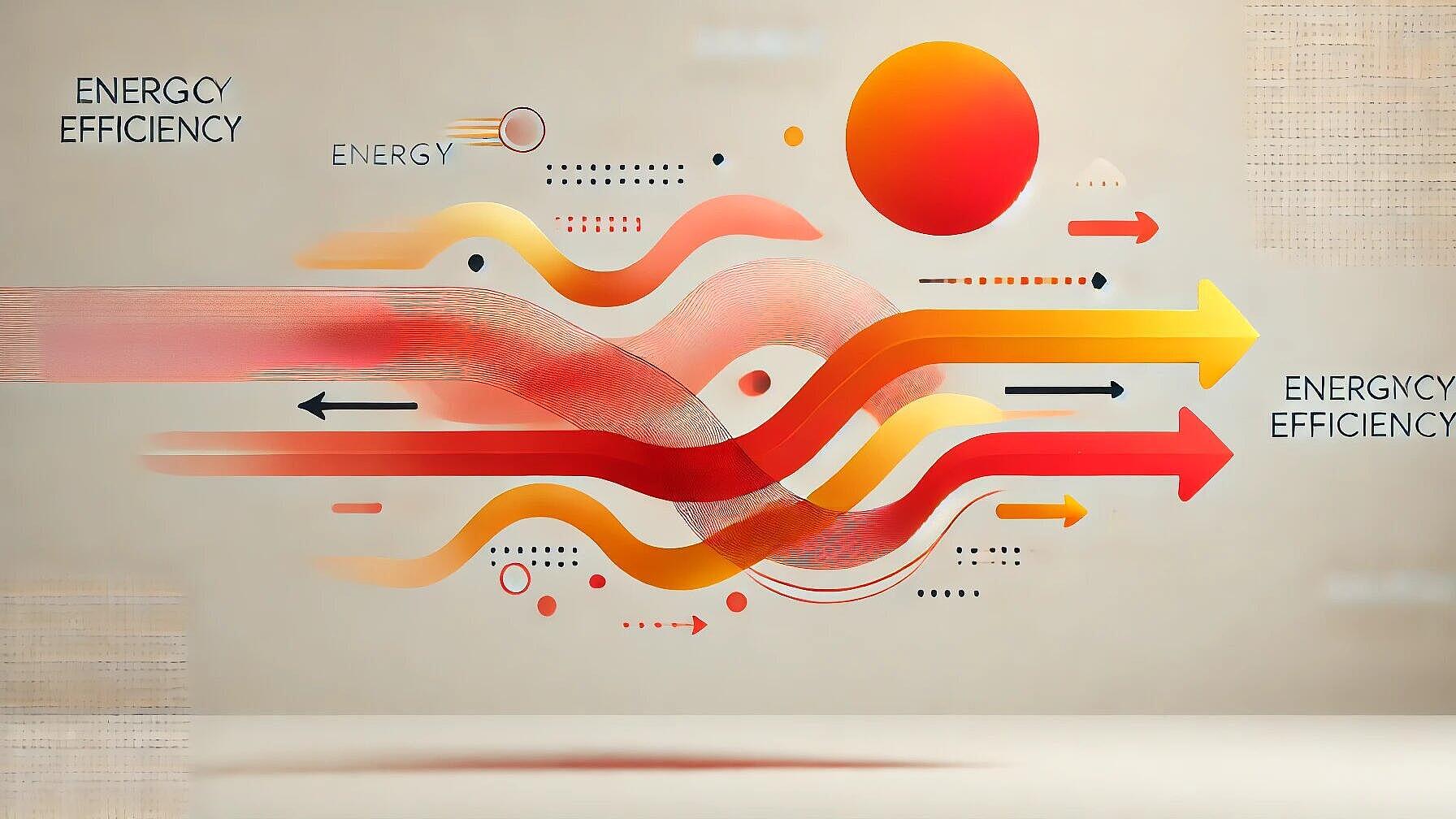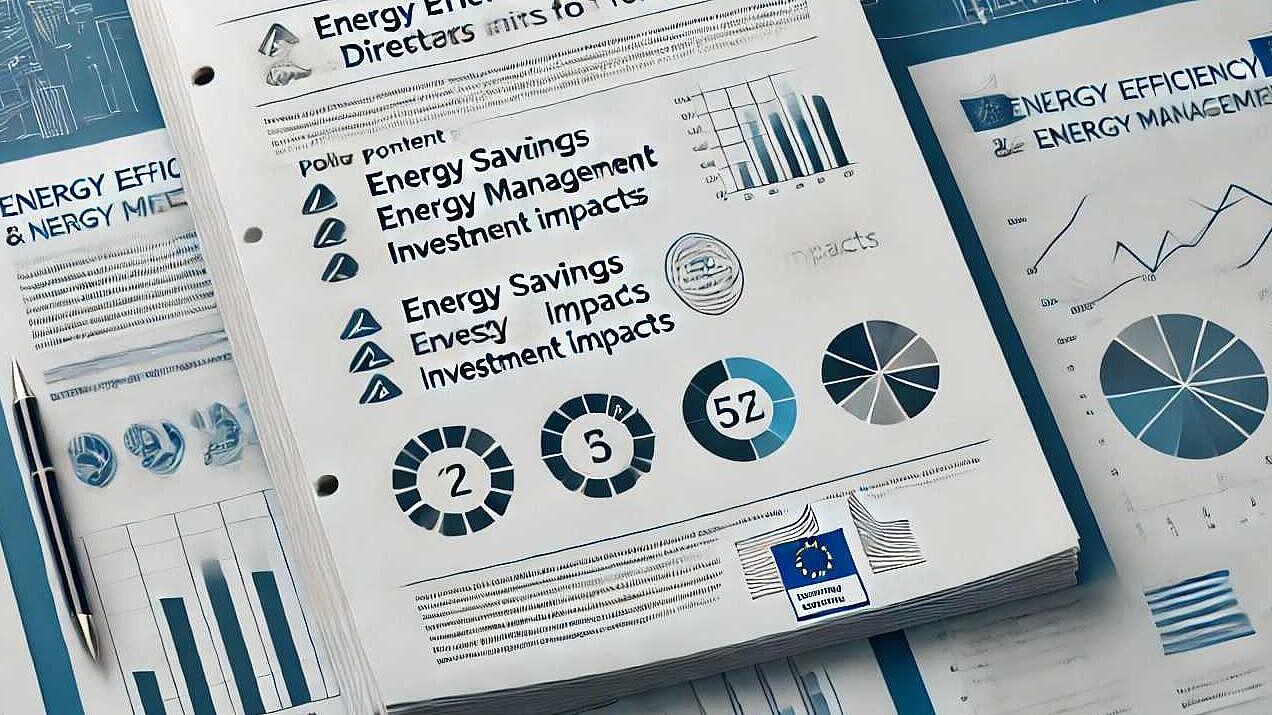 Energy Efficiency
Energy EfficiencyPowering Europe's Clean Energy Future: Key Elements of the EU Energy Efficiency Directive
Resumo
The European Union Energy Efficiency Directive establishes binding targets to reduce final energy consumption by at least 11.7% by 2030 and sets indicative caps on primary energy consumption. Each EU country will define its own energy efficiency contributions based on a set formula considering various factors, including GDP and past efficiency efforts. The directive mandates a yearly increase in annual energy savings from energy suppliers and supports energy poverty mitigation by mandating a portion of energy savings benefit low-income households.
Public sectors must reduce energy usage and renovate public buildings to meet energy performance standards. Consumers are to receive frequent and accurate billing information, and there are improved rights regarding access to consumption data. The directive also promotes efficient heating and cooling systems, introduces energy management and audit requirements for large and medium-sized companies, and encourages the use of waste heat and renewable energy.
Financing and technical assistance are underlined for successful implementation, including EU funds and national energy efficiency funds. Robust monitoring and reporting systems will ensure the realization of targets. The directive is pivotal for achieving EU climate goals and advancing the energy transition, emphasizing energy reduction for emissions cuts, cost savings, and system resilience. Member states must translate these requirements into impactful national policies.
Artigo aberto completo
Powering Europe's Clean Energy Future: Key Elements of the EU Energy Efficiency Directive
The European Union has taken a major step forward in its efforts to combat climate change and reduce energy consumption with the adoption of a Energy Efficiency Directive. This landmark legislation sets ambitious targets and introduces wide-ranging measures to drive energy savings across all sectors of the economy. By prioritizing energy efficiency as a key pillar of the EU's energy and climate strategy, the directive aims to accelerate the transition to a cleaner, more sustainable energy system while enhancing energy security and affordability for European citizens and businesses.
Ambitious New Targets
At the heart of the directive are binding EU-wide energy efficiency targets for 2030. Member states must collectively ensure a reduction in final energy consumption of at least 11.7% compared to 2020 projections. This translates to limiting final energy use across the EU to no more than 763 million tonnes of oil equivalent (Mtoe) by 2030. The directive also sets an indicative target to cap primary energy consumption at 992.5 Mtoe.
To achieve these headline goals, each EU country must set its own indicative national energy efficiency contribution. The directive provides a formula and criteria for calculating national contributions, taking into account factors like GDP, energy intensity, cost-effective energy saving potential, and early efficiency efforts. This flexible approach allows member states to determine the most suitable path for their national circumstances while still driving collective progress towards the EU-wide targets.
Energy Savings Obligation
A cornerstone of the directive is the energy savings obligation, which requires member states to achieve new annual energy savings of 1.3% from 2024, rising to 1.5% in 2026 and 1.9% from 2028 onwards. This obligation can be met through an energy efficiency obligation scheme for energy companies and/or alternative policy measures. Importantly, a significant share of required energy savings must be achieved among low-income households and those affected by energy poverty.
Exemplary Role of the Public Sector
The directive places a strong emphasis on the public sector leading by example. Public bodies must reduce their final energy consumption by at least 1.9% each year. Additionally, 3% of the total floor area of public buildings must be renovated annually to meet minimum energy performance standards. The directive also mandates energy efficiency requirements in public procurement for a wide range of products, services, and buildings.
Empowering Consumers
Several provisions aim to empower consumers and provide them with better information about their energy consumption. This includes requirements for more frequent and accurate billing information, especially for heating, cooling and hot water in multi-apartment buildings. The directive also introduces new rights for consumers regarding access to consumption data and strengthens rules on the transparency of energy contracts.
Tackling Energy Poverty
Addressing energy poverty is a key priority throughout the directive. Member states must implement targeted measures to improve energy efficiency among vulnerable households. This includes using a share of energy savings from the energy savings obligation to alleviate energy poverty. The directive also requires countries to assess the impact of energy efficiency measures on low-income households and implement policies to protect vulnerable consumers.
Promoting Efficient Heating and Cooling
The directive places a strong focus on increasing the efficiency of heating and cooling systems, which account for a large share of energy consumption in buildings. It requires member states to carry out comprehensive assessments of the potential for efficient district heating and high-efficiency cogeneration. Based on this, countries must implement policies to realize identified cost-effective potential. The directive also sets new sustainability criteria for district heating and cooling systems, with increasing requirements for renewable energy and waste heat utilization.
Obligations for Businesses
Large companies are required to implement energy management systems, while medium-sized enterprises must undergo regular energy audits. The directive also introduces new requirements for data centers to disclose information about their energy performance and promote heat reuse. These measures aim to drive energy efficiency improvements in the private sector and harness the potential of digital technologies.
Financing and Support
To facilitate implementation, the directive emphasizes the importance of financing and technical assistance. It encourages member states to make full use of available EU funds and establish dedicated national energy efficiency funds. The European Commission is also tasked with facilitating the exchange of best practices and providing guidance on unlocking private investment for energy efficiency.
Monitoring and Enforcement
Robust monitoring and verification systems are mandated to ensure the effectiveness of energy efficiency measures. The directive also introduces new reporting requirements for member states on progress towards targets and implementation of key provisions. The Commission will regularly assess collective progress and can propose additional measures if efforts are deemed insufficient.
Looking Ahead
With its comprehensive scope and ambitious targets, the new Energy Efficiency Directive represents a major upgrade of the EU's legislative framework for energy efficiency. By driving improvements across all sectors - from buildings and industry to transport and energy supply - the directive will play a crucial role in delivering on the EU's climate goals and advancing the clean energy transition.
However, effective implementation will be key to realizing the full potential of the new rules. Member states face the challenge of translating EU-level requirements into impactful national policies and measures. This will require sustained political commitment, mobilization of investments, and close collaboration between governments, businesses, and citizens.
As Europe grapples with pressing energy security concerns and the urgent need to decarbonize, doubling down on energy efficiency emerges as a win-win strategy. By reducing overall energy demand, efficiency measures can lower costs, cut emissions, and enhance resilience of the energy system. The new directive provides a robust framework to accelerate efficiency improvements over the coming decade, helping to build a more sustainable and competitive EU economy powered by clean energy.



